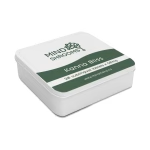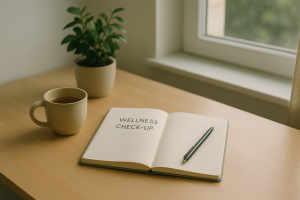We live in a time of remarkable access. With a few taps, we can connect with people across the globe, access centuries of knowledge, watch endless entertainment, track our health, and order food — all from a pocket-sized device. But as our digital tools have grown more powerful, so too has the challenge of using them without being consumed by them.
What began as tools for convenience and connection have, in many cases, become sources of anxiety, distraction, and mental fatigue. Notifications pull us from deep thought. Algorithms hijack our attention. Information floods our minds faster than we can process it. The result? A persistent cognitive haze, emotional volatility, and the inability to sustain clarity throughout the day.
But this is not a call to reject technology. Instead, it is an invitation to rebalance. To step back, reassess, and build a conscious digital life that supports — rather than fragments — our mental focus and emotional well-being.
The Cost of Constant Connectivity
Before we look at solutions, it’s important to understand the toll that digital saturation takes on our brains:
📱 1. Cognitive overload
We process 5 times more information daily than we did just a few decades ago. This constant stream fragments our attention and prevents our brains from moving information into long-term memory.
🧠 2. Decreased working memory
Multitasking — particularly across devices — taxes the prefrontal cortex. We begin tasks and forget them halfway through. Details slip away. Our ability to think clearly erodes.
😟 3. Emotional dysregulation
Endless scrolling, comparison culture, and news cycles filled with alarm activate the amygdala (fear center of the brain), keeping us in a low-level state of stress and emotional reactivity.
😴 4. Sleep disruption
The blue light from screens suppresses melatonin, the sleep hormone. Notifications and mental stimulation delay sleep onset and reduce sleep quality, impacting next-day cognitive function.
The Myth of Productivity Through Constant Access
We often tell ourselves that being constantly connected makes us more productive. But studies tell a different story.
Workers who check email frequently report higher stress levels.
Digital interruptions can reduce IQ by as much as 10 points, according to a study from the University of London.
After checking a phone, it takes the average person 23 minutes to return to a focused task.
In short: digital excess gives the illusion of productivity while quietly degrading it.
What a “Balanced Digital Life” Actually Means
Digital balance doesn’t mean disappearing into the woods or deleting all your apps. It means designing a relationship with technology that prioritizes clarity, intentionality, and presence.
It means using your devices to support your life — not allowing them to become your life.
Let’s explore the pillars of a balanced digital life.
Pillar 1: Conscious Consumption
Information is not nourishment unless it’s digestible. Just as you’d avoid eating all day without pause, your brain needs boundaries around information intake.
Set intentional times to consume media — morning, midday, evening.
Unsubscribe from content you no longer find helpful.
Replace passive scrolling with curated learning: a single article, a podcast, a saved newsletter.
Turn off push notifications for non-urgent apps.
Think of your attention as a currency — don’t spend it on things you don’t value.
Pillar 2: Digital Environments That Reduce Noise
Your phone and laptop can be designed to support focus, not sabotage it. A few changes can transform your digital spaces:
Organize your home screen to feature only essential apps.
Use grayscale mode to reduce visual stimulation and make apps less addictive.
Create folders that group distractions out of sight (“Social,” “Entertainment”).
Use apps that limit screen time or block access to certain sites during work blocks.
Make your digital world a calm place to enter — not a battlefield for your attention.
Pillar 3: Mindful Transitions Between Tech and Real Life
The moments between digital and physical life matter. Here’s how to create cleaner transitions:
Avoid reaching for your phone first thing in the morning — take 10–15 minutes of quiet presence before connecting to the world.
At night, implement a digital sunset — no screens 60–90 minutes before bed.
Before meals, during walks, or in conversations, put your phone away fully, not just face-down.
These small boundaries strengthen your ability to be present and regulate your nervous system.
Pillar 4: Scheduled Disconnection
If your entire day is accessible, you’re never really off. Building in time for intentional disconnection restores clarity and creative thinking.
Try these:
A tech-free morning each weekend.
One evening a week with no screens after 6 PM.
A quarterly digital detox day where you disconnect for 24 hours (and go analog).
You may be surprised by how much calmer and more centered you feel — not because you did more, but because your brain finally had space to integrate.
Pillar 5: Purposeful Reconnection
After stepping away, don’t just jump back into chaos. Re-enter your digital world intentionally:
Check messages and email during predetermined windows, not constantly.
Before opening a social media app, ask: Why am I opening this? What do I want from it?
After browsing, take a few moments to breathe and reset before switching tasks.
These transitions reduce the “brain spin” that often follows digital immersion.
How Digital Balance Supports Mental Clarity
So why does this matter?
Because mental clarity is not a natural byproduct of modern digital life. It must be protected.
When you reduce digital noise, here’s what begins to happen:
Thoughts become more linear and organized. You finish tasks. You retain more.
Creativity returns. Space invites ideas that constant input blocks.
You sleep better. And with better sleep comes better thinking.
You become emotionally steadier. With less exposure to triggers and interruptions, your baseline state becomes calmer.
Most importantly: you begin to feel like yourself again — not just a reactive node in a digital network.
Digital Minimalism ≠ Deprivation
Some worry that reducing digital use will disconnect them from what’s happening. But what most people discover is that they begin to connect more deeply — not less.
They connect better with:
Their thoughts
The people around them
Their creative ideas
Their emotional cues
The physical world they inhabit
Digital balance isn’t about limits. It’s about liberation — from distraction, from anxiety, from the feeling that you’re never quite caught up.
Your Digital Wellness Routine: A Weekly Sample
Here’s a sample flow for cultivating clarity and balance in your digital life:
Daily
Phone off during first 15 minutes of morning
2–3 focused work blocks (1 hour, no distractions)
20-minute midday screen break (preferably outdoors)
No screens 1 hour before bed
Weekly
1 “digital light” day (phone use limited to calls/texts)
1 evening of analog leisure (reading, journaling, cooking)
Review apps and delete 1–2 that no longer serve you
Final Thoughts: Designing a Mindful Digital Life
Technology isn’t going anywhere. But the way we relate to it can — and must — evolve. We are not meant to live as if every moment demands response, as if attention is infinite, or as if our value depends on visibility.
Creating a balanced digital life is not about rejecting tools. It’s about reclaiming agency over how those tools shape our minds and emotions.
You don’t need to do it all at once. Start with one shift — perhaps a 10-minute phone-free morning, or a tech-free walk during lunch. Let the quiet come in. Let your mind remember what it feels like to be clear.







